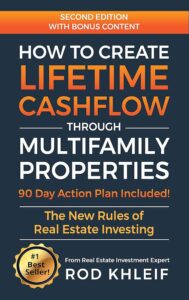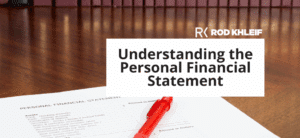10 Ways to Find Good Real Estate Deals and Build a Strong Investment Portfolio
Finding good real estate deals is the foundation of building long-term wealth in multifamily investing. If you’re serious about acquiring investment properties, you need a consistent deal flow to uncover opportunities that will yield strong returns.
I often refer to my 150-15-5-1 formula when it comes to finding deals. Out of every 150 properties you analyze, 15 will be worth pursuing. You’ll submit offers on 5, and in the end, you’ll only close on 1.
The bottom line? You need multiple strategies to consistently find and acquire profitable real estate investments. Below are 10 proven strategies that will help you source, evaluate, and secure the best real estate deals.

1. Build Strong Relationships with Brokers
One of the fastest ways to find off market deals is by working with the right commercial real estate brokers. A good broker can be a game-changer because they have inside access to multifamily properties that may never hit the public market.
To build strong broker relationships:
- Identify the most active brokers in your market by searching LoopNet, CoStar, and brokerage websites.
- Call or meet brokers and clearly communicate your investment criteria, including your target property size, location, and budget.
- Follow up consistently, even if they send deals that don’t fit. Let them know why a deal doesn’t work so they can refine their recommendations.
- Be professional, reliable, and decisive. Brokers work with serious buyers. You must prove that you are one.
When a broker has an exclusive listing or pocket deal, you want to be the first investor they call.
2. Tap Into Pocket Listings
A pocket listing is a property that a broker has been hired to sell but is not being publicly marketed. These opportunities often arise when a seller wants to avoid public exposure or test the market before formally listing.
To access pocket listings:
- Build trust with brokers so they bring you deals before they go public.
- Be clear about your ability to close quickly and make fair offers.
- Stay in constant communication so brokers think of you first when a motivated seller emerges.
The best real estate investors rarely rely on publicly listed properties alone. They get access to deals before the competition.
3. Utilize Online Real Estate Listings
Many investors overlook online listing platforms, but they can still be an excellent source of real estate deals, if you know how to use them strategically.
Key platforms to monitor include:
- LoopNet (www.loopnet.com)
- CoStar (www.costar.com)
- CREXi (www.crexi.com)
- CityFeet (www.cityfeet.com)
- Marcus & Millichap (www.marcusmillichap.com)
- CBRE (www.cbre.com)
- Cushman & Wakefield (www.cushmanwakefield.com)
To maximize results:
- Set up automatic alerts for properties that meet your investment criteria.
- Act fast, good deals get taken quickly.
- Reach out to listing agents to inquire about additional off-market opportunities.
Many investors assume great deals aren’t on LoopNet, but that’s not true. The right approach can uncover hidden investment opportunities.
4. Find Overlooked Listings That Have Been on the Market Too Long
Many real estate investors ignore listings that have been on the market for several months or even years. However, these properties often present strong investment potential.
Why do properties sit on the market?
- The seller overpriced the property initially.
- The listing description lacks important details, turning off potential buyers.
- The property is mismanaged, with high expenses and below-market rents.
One of my best deals was a 24-unit property near Tampa that sat on LoopNet for three years. The rents were far below market, and the owners were overpaying for maintenance. We quickly increased cash flow by renegotiating contracts and adjusting rents to market rates.
Pro-Tip: Always dig deeper, sometimes the best deals are the ones others ignore.
5. Leverage Craigslist for Off-Market Deals
Craigslist remains a powerful but underutilized tool for finding motivated sellers. Many mom-and-pop property owners use Craigslist instead of listing their properties with a broker.
To find real estate deals on Craigslist:
- Search for listings using keywords like:
- “Must sell”
- “Investor special”
- “Owner financing available”
- “Handyman special”
- Post “We Buy Multifamily” ads to attract sellers looking for a quick sale.
- Reach out to FSBO (For Sale by Owner) sellers and negotiate off-market purchases.
Craigslist works particularly well for small and mid-sized multifamily properties (2–30 units).
6. Call “For Rent” Ads to Find Motivated Landlords
Landlords with vacant units are often motivated to sell, especially if they’re tired of tenant turnover, maintenance issues, or rent collection hassles.
Steps to find deals through rental listings:
- Call landlords advertising units for rent on Craigslist, Zillow, and Facebook Marketplace.
- Ask if they’ve considered selling instead of renting.
- Focus on self-managed properties, these landlords are often more motivated.
Many frustrated landlords are open to offers, they just haven’t actively listed their property yet.
7. Send Direct Mail to Property Owners
Direct mail remains one of the most effective ways to find off market multifamily deals.
Key steps to launching a successful direct mail campaign:
- Build a targeted list of multifamily property owners in your market.
- Write simple, effective letters highlighting why you want to buy their property.
- Mail consistently: follow up every 6–8 weeks.
Direct mail works because most property owners won’t list their properties online, but they might sell if the right offer comes along.
8. Follow Up with Every Property Owner You Contact
Finding great real estate deals is all about persistence. Most sellers won’t say yes immediately, but many will sell eventually.
- Keep track of every owner conversation in a CRM.
- Schedule regular follow-ups every 2–3 months.
- Stay top of mind so when they are ready to sell, you’re the first person they call.
Successful investors don’t give up after the first call—they build long-term relationships.
9. Contact Banks for Foreclosed REO Properties
When banks foreclose on multifamily properties, they often want to unload them quickly. Banks aren’t in the business of property management—they prefer cash buyers who can take properties off their hands.
How to access bank REOs:
- Build relationships with local bank asset managers.
- Ask for a list of their real estate-owned (REO) properties.
- Negotiate below-market pricing since banks want these properties gone.
REO properties often require renovation and repositioning, but they can be incredible value-add opportunities.
10. Work with Wholesalers and Birddogs
Some investors specialize in finding off-market properties but don’t buy them themselves. These individuals—wholesalers and birddogs—can be a valuable source of deals.
- Wholesalers find distressed properties, put them under contract, and assign them to investors.
- Birddogs scout properties and send investor leads in exchange for a finder’s fee.
Building relationships with wholesalers and birddogs expands your deal flow and saves you time.
Final Thoughts from Rod Khleif
The best real estate investors don’t sit around waiting for deals to come to them. They actively build pipelines, follow up relentlessly, and stay persistent.
Choose 2–3 strategies and execute them consistently. Over time, these efforts will create a steady flow of high quality investment opportunities.
Take action today, because you only need ONE deal to change your financial future.












